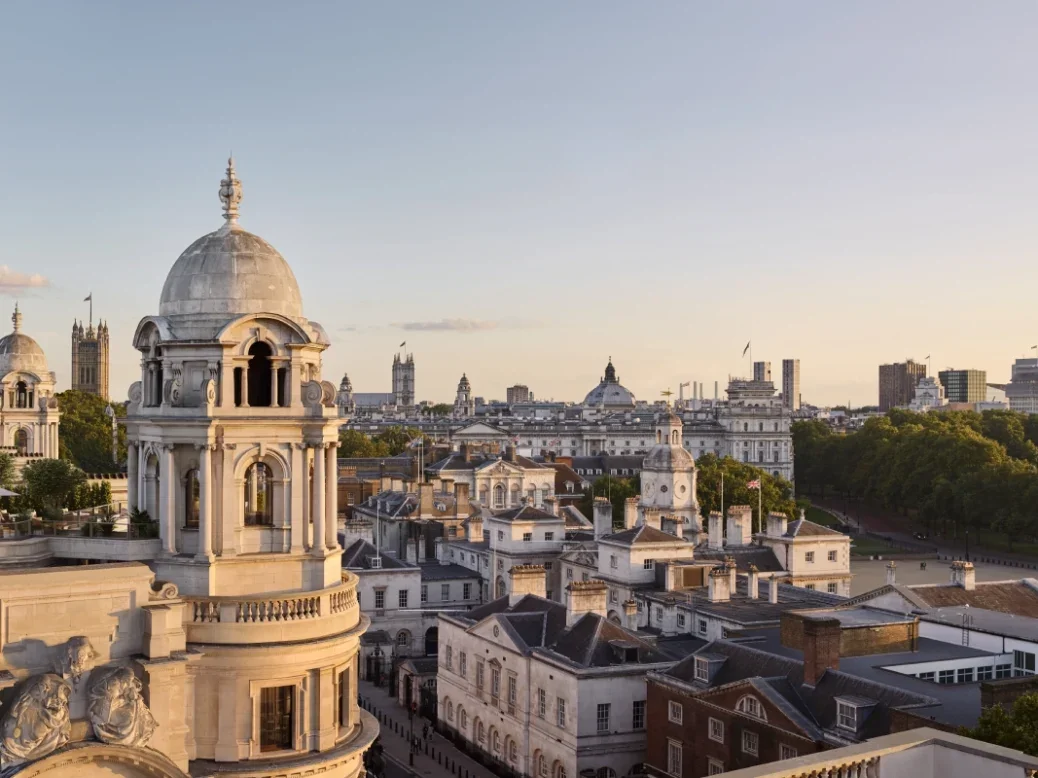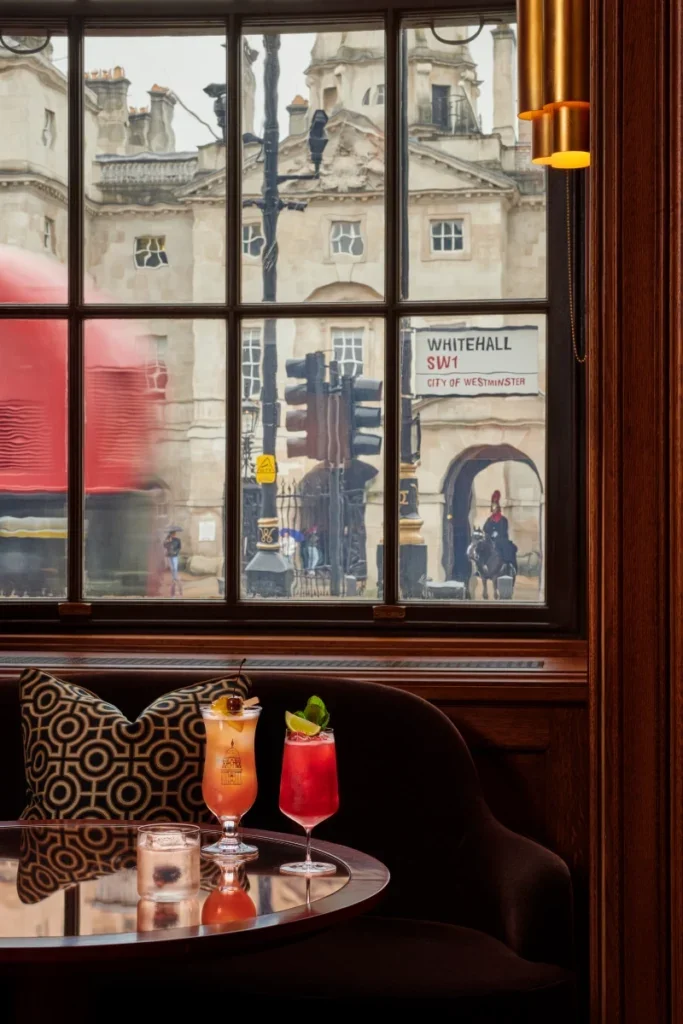
‘When a man is tired of London, he is tired of life,’ said Samuel Johnson in 1777.
Arguably this is not an issue when it comes to the past and present vibrancy of London’s Whitehall. Home to church, monarch and state, this heartland of power and scandal is as alive today as it was centuries ago and has recently had new life breathed into it with the redevelopment of some of its iconic architecture.
Early drawings depict Whitehall as a significant area in the City of Westminster and central London even before the 1500s – the site of principal government offices since the establishment of Henry VIII’s court at Whitehall Palace in the 1530s. Indeed, the name ‘Whitehall’ was first recorded in 1532, with its origins in the white stone used for the buildings.
Today it is home to two of London’s most famous squares (Trafalgar Square and Parliament Square), the Houses of Parliament, the Cenotaph, 10 Downing Street (which nestles in the remains of Henry VIII’s tennis courts) and the remarkable King Charles Street, home to the Foreign Office. All in all, an area of London rich with history and all its attendant oddities.
But there is so much more to discover beyond the obvious. Attracting a lot of attention in the last few years is the former Old War Office building – today reborn as The OWO. Built on the site of a former palace, and with its vast size and incredible architectural aspects befitting this famous corner of London, it has now changed function from a secretive war office to a warm and welcoming Raffles London hotel, a collection of exciting restaurants and bars, and a spectacular ballroom. It is a place to enliven one’s spirit for London in a destination which holds an enduring fascination for Londoners and visitors alike.
When stepping out of this grand hotel, some of the most famous buildings in Europe are within sight. But let’s start in your imagination and go back to the Tudor period, if not before, when Westminster was detached from the City of London.
Out in the fields and parkland were three royal palaces: the Palace of Westminster (better known today as the Houses of Parliament), St James’s Palace and Whitehall Palace.
The Palace of Westminster and St James’s Palace still exist. The biggest and most sprawling of them, Whitehall Palace, was destroyed by fire in the late 17th century. The palace might have been rebuilt by William III, were he not asthmatic. Instead, he built a palace at Kensington, where the air was better for his lungs.
Today, all that survives of Whitehall Palace is Inigo Jones’s Banqueting House next to Raffles London at The OWO: a hall built for the court entertainments of James I and Charles I. James I can be seen being taken up to heaven on the ceiling painted by none other than Rubens. It was from a window in the Banqueting House that Charles I made his last walk, stepping out onto the scaffold on which a heavily disguised executioner cut off the King’s head.

The Palace of Westminster, most of which was rebuilt after a fire in 1834, is home to Big Ben. That is the name of the largest bell, not the tower, which used to be called the Clock Tower but was renamed the Elizabeth Tower after Queen Elizabeth II in 2012, the year of her Diamond Jubilee. Beside the Elizabeth Tower is a survivor of a much earlier age: Westminster Hall, built by William the Conqueror’s son, William II, who came over from France to hold court there in 1099.
There was probably no other hall on this scale in Europe at the time. Richard II remade it with a hammer-beam roof – a phenomenon of medieval carpentry.
Next to the palace, an abbey was begun by the last of the Saxon kings, Edward the Confessor, who wanted to be buried there. This was literally the West Minster. It appears in the Bayeux Tapestry, the record of William the Conqueror’s invasion of England in 1066.
St James’s Palace was first used as a hunting lodge, a place to which the monarch could retreat. Beside it, St James’s Park is a memory of the old deer park. Charles II and his brother, the Duke of York (the future James II), would often be seen there, surrounded by dogs. In 1661, he observed the ‘Duke of York playing at Pellmell, the first time that ever I saw the sport’. Pellmell gave its name to the modern street of Pall Mall, the heart of gentlemen’s clubland. What is now Trafalgar Square was once the setting for another kind of sport – it was the site of the Royal Mews, where early kings kept their horses and hawks.
Behind Whitehall Palace, the banks of the Thames were lined with great ‘inns’, built for the use of rich archbishops and other prelates when they visited the court. These got into the hands of the country’s most powerful noblemen during the Tudor period. The Duke of Somerset, Lord Protector of England who ran the country for the boy king Edward VI, gave his name to Somerset House and lived there until he was toppled and executed.
Somerset House became, traditionally, a property of the English queens, the last who lived there being Charles I’s widow, Henrietta-Maria. It is now home to the Courtauld Gallery and more than 120 creative organisations, such as dance companies.
Like the site of Whitehall Palace itself, these splendid residences had outlived their original use once the court moved west to Kensington.
Some were redeveloped as residential streets, which often still bear the names of their illustrious former occupants – Charles Villiers, the Duke of Buckingham, lives on in Charles Street, Villiers Street, Duke Street and Buckingham Street.
The plot on which The OWO stands underwent a similar transformation. When the offices previously used by the War Department were found not merely to be inconvenient but possibly lethal, since several prominent officials had died of typhoid in them, the site of a new building was identified on Whitehall. It was still in the hands of the Office of Woods and Forests, which managed Crown land. The generals and administrators took possession in 1906 but stayed for less than a century. In 2023 it opened in splendid style as The OWO and home to Raffles London.
Rates from £1,100 including VAT
Instagram: raffleslondon.theowo
Web: raffles.com/london

